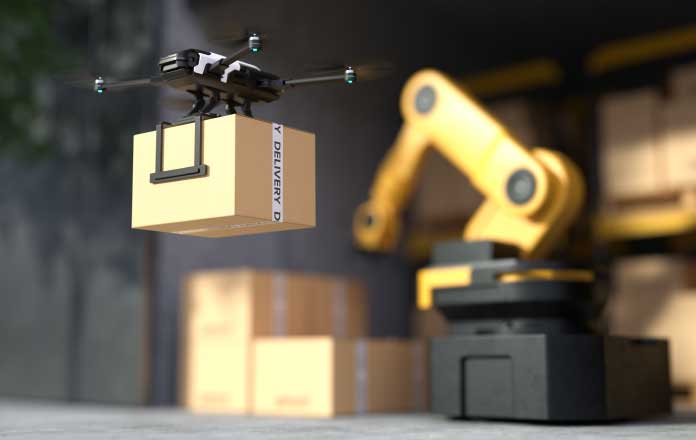In the ever-evolving landscape of modern logistics, warehouses are embracing cutting-edge technologies to enhance efficiency and streamline operations. One such revolutionary solution making waves in the industry is using autonomous drones for inspections. These unmanned aerial vehicles are transforming the traditional warehouse inspection processes, offering a myriad of benefits that range from increased speed and accuracy to cost savings.
Speed & Efficiency:
Traditional warehouse inspections can be time-consuming and labor-intensive. Manual inspections often require personnel to navigate large storage areas, check inventory, and identify potential issues. Autonomous drones with advanced sensors and cameras can swiftly navigate the warehouse space, capturing high-resolution images and data in real-time. This significantly reduces the time required for inspections, allowing warehouses to operate more efficiently.
Real-time Data & Analytics:
Autonomous drones provide real-time data and analytics, enabling warehouse managers to make informed decisions instantly. The drones can monitor inventory levels, identify discrepancies, and detect potential hazards such as damaged goods or spillages. This immediate access to data empowers warehouses to address issues promptly, preventing disruptions to operations and ensuring a smooth supply chain.
Enhanced Safety:
Warehouses often store diverse products, some of which may pose safety risks during inspections. Autonomous drones eliminate the need for human workers to navigate potentially hazardous environments, improving overall safety. Drones can access confined spaces, heights, or areas with restricted visibility without putting human workers at risk. This enhanced safety aspect is a crucial factor in optimizing warehouse operations.
Cost Savings:
Warehouses can save money by automating inspection procedures. Autonomous drones eliminate the need for a large workforce dedicated to manual inspections, reducing labor costs. Moreover, the speed and efficiency of drone inspections contribute to increased productivity and operational savings. Forward-thinking warehouses could consider investing in autonomous inspections due to their long-term cost-effectiveness, even though the initial investment in drone technology may be a factor.
Scalability:
Autonomous drone technology is highly scalable, making it suitable for warehouses of various sizes. Whether a facility is large or small, drones can adapt to the specific needs and scale of the operation. This scalability ensures that warehouses can implement drone-based inspection solutions without extensive infrastructure changes.
Integration with Warehouse Management Systems (WMS):
Integrating autonomous drone inspections with WMS is essential to maximizing their benefits. WMS can receive and process the real-time data collected by drones, providing a comprehensive overview of warehouse operations. This integration facilitates seamless decision-making, inventory management, and overall warehouse optimization.
Environmental Sustainability:
Autonomous drones contribute to environmental sustainability by reducing the carbon footprint associated with traditional inspection methods. Drones operate on electric power, eliminating the need for fuel-based machinery and reducing greenhouse gas emissions. As the logistics industry continues to prioritize sustainability, the adoption of drone technology aligns with environmentally conscious practices.
The integration of autonomous drones for warehouse inspections represents a significant leap forward in the evolution of logistics. These drones’ speed, accuracy, and efficiency improve warehouse operations while lowering costs and promoting environmental sustainability, safety, and cost savings. As technology advances, autonomous drones are poised to become an integral part of the modern warehouse, revolutionizing the way inspections are conducted and shaping the future of logistics.





